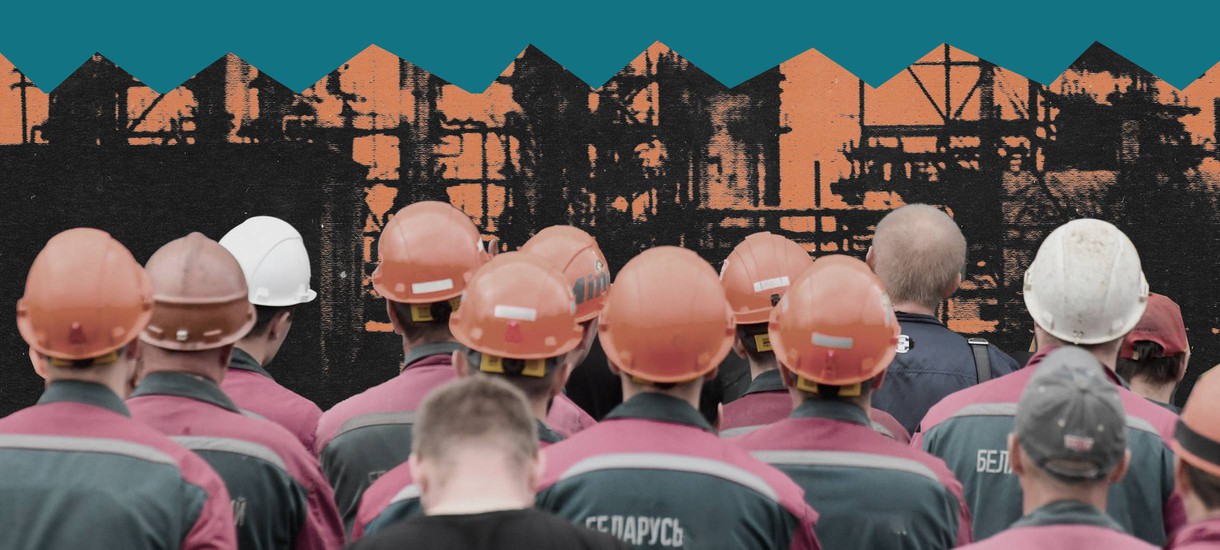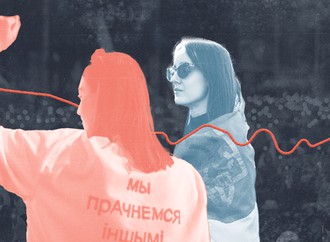Last week, two labour activists from Naftan oil refinery were detained by Belarusian security service KGB on charges of undermining national security. The detained Volha Britikava and Aliaksandr Kukharonak have already spent short stints in jail for criticising Lukashenka’s government and participating in anti-government protests. They are among the latest victims of the ongoing repressions against labour organisations and activists who joined the country-wide protests three years ago, in August 2020. Over 40 members of labour organisations are currently in jail in Belarus, dozens more had to seek refuge abroad, and many workers face persecutions and politically motivated dismissals on a daily basis. This wave of police violence is a grim reaction of the Belarusian ruling elite to the mass labour unrest that shook the country three years ago in the aftermath of the contested presidential elections that took place on August 9, 2020.
August 2020 marked the peak of the mass protests that will go down in history as the largest episode of mass disobedience and definitely the most spectacular display of police violence in the history of independent Belarus. The electoral protests of 2020 stood out in one more respect: workers’ organisations took part in them as a separate collective agent along with other social groups who stressed their distinctive role: women, healthcare workers, pensioners, IT specialists and others. The labour’s participation in the mass electoral protests was not new to Belarusian social history, but in 2020 it took an unprecedented scale; it was unusual, however, for the electoral and anti-corruption protests in other post-Soviet countries, including the so-called coloured revolutions in Georgia and Ukraine, as well as in anti-Putin demonstrations in Russia.
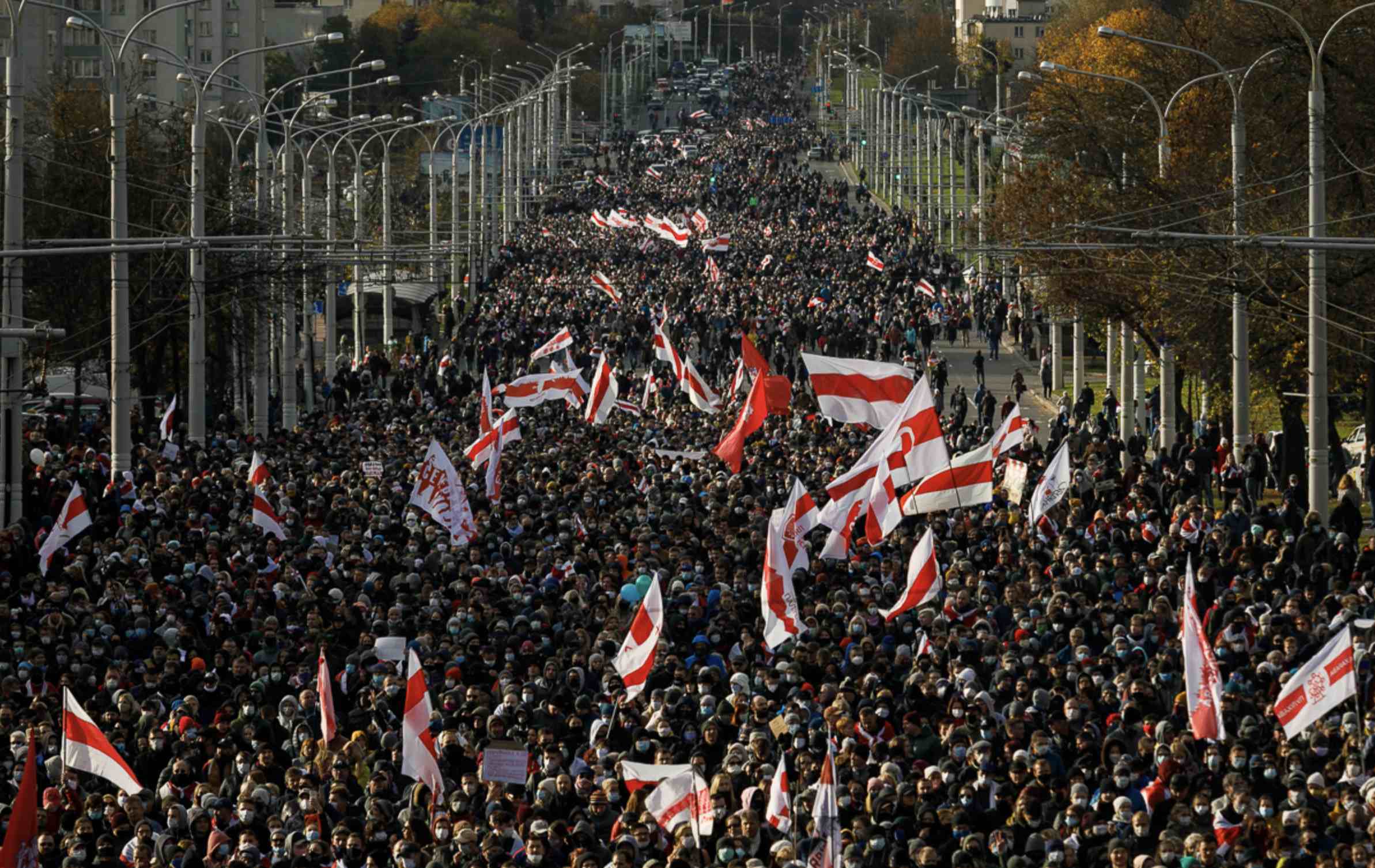
"Partisan march" in Minsk, organized as an action of solidarity with strikers from Minsk factories, October, 2020. Photo: TUT.by
As I was following those autumn events in Belarus, I had already finished my dissertation about the workers’ movement and the state regulation of labour relations in that country. My background knowledge about the social history of Belarus instilled a pessimistic feeling about the prospects of the success of the protesters as their political leaders imagined it. I did not expect that Lukashenka would resign, but at the end of the first week of the protests I thought that there was a potential for a positive change in the country and that it could come from the workers’ movement. Indeed, workers on BelAZ, MAZ and many other industrial enterprises managed to self-organise and bring their bosses and local politicians to listen to their demands, briefly demoralising the vast state-capitalist elites.
As opposed to street protests, labour unrest on workplaces had the potential of wresting concessions relating to workers’ rights and overall democratisation. The developments of the following three months showed that my pessimism was justified and that the hopes of even moderate progressive changes were shattered. Moreover, the ruthless and violent crackdown of the uprising ordered by Lukashenka and supported from Moscow paved the way for Belarus’s participation in Russia’s invasion of Ukraine. Belarusian workers’ plight was determined not only by the malignant transformation of Lukashenka’s authoritarian populism but also by the resurgence of Russian imperialism.
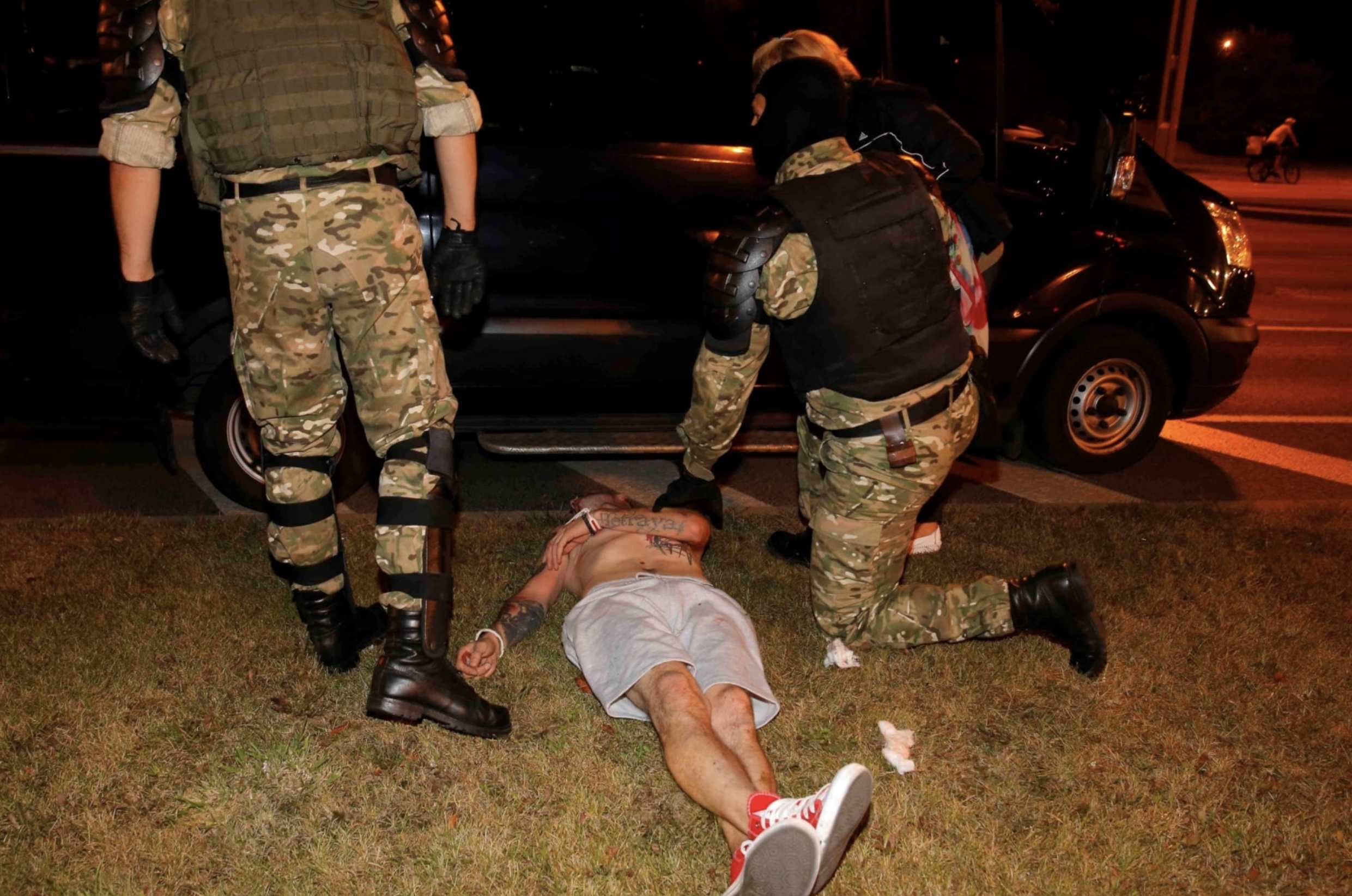
Protester Roman Zaitsev was hit in the chest by a stun grenade during the protests in Minsk, August 2020. Photo: Reuters
However, it is worth studying those outstanding weeks and months with a view of determining the weaknesses and strength of labour in opposing authoritarian regimes. First of all, let us consider the very fact of workers’ participation in anti-government protests with a separate collective identity. This may sound counter-intuitive, as Belarusian propaganda portrayed workers as one of the pillars of support for Lukashenka’s populism. Indeed, as opposed to other post-Soviet countries, Belarus preserved a considerable industrial working class concentrated in state-owned machine-building and chemical industrial enterprises located in the capital city Minsk and in every regional centre. A whole district of Minsk, Partizanski district, is home to giant machine building enterprises, such as Minsk Tractor Plant and Minsk Automobile Plant. No wonder that workers from these and other enterprises marched along the main alley of the district to join the protesting crowd on the main city square.
Thus, the structural power of the working class in an industrial country partially accounts for the protest potential. What about the protest sentiments and the organisational power? This is where the contradiction of the so-called Belarusian model of post-Soviet development comes to the fore. Traditionally, workers have been active in opposing the government starting with mass a protest in the last year of the Soviet rule. Strongly reminiscent of the 2020 events, Belarusian workers took to the streets in 1991 to protest against price hikes and eventually against the Communist bureaucracy. The republic was on the verge of the martial law and the prestige of the communist party was undermined.
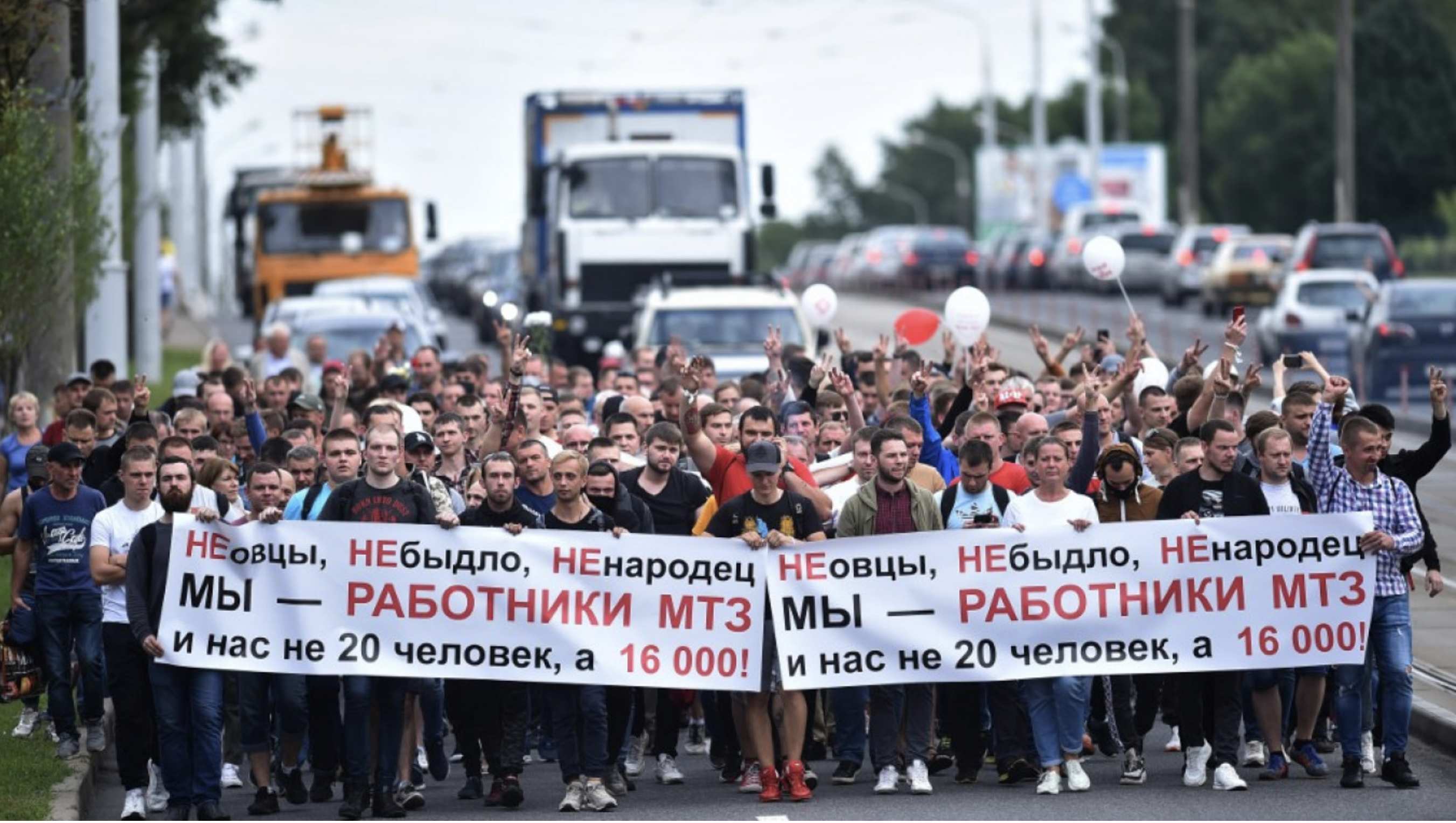
Mass strike of Minsk Tractor Plant workers, October 2020. Photo: from open sources
These protests gave birth to a powerful reformist movement in the legacy trade union that comprised most of the post-Soviet workers, Belarusian Federation of Trade Unions; they also brought to life several radical independent trade unions. Volha Britikava comes from this tradition, being one of the leaders of the Belarusian Independent Trade Union established in 1991 after the strikes in Salihorsk potash mines. These reformed and newly emerged labour unions provided the Belarusian working class with organisational resources and an experience of self-organisation. Labour protests were common in the nineties, also after Lukashenka came to power in 1994. After one of such protests in 1995, the new president warned: if people take the main square, there will be tanks. It almost came to that in 2020.
Lukashenka’s populist turn was partially a response to the threat of the popular protests with social demands and partially a pre-emptive attack to forestall the emergence of independent political competitors. His decision to pause privatisation of state assets was as a much a partial concession to the workers’ militancy as an attempt to prevent the formation of politically independent class of large capitalists known as oligarchs in the neighbouring Russian and Ukraine. Lukashenka’s political strategy was that of a Ceasarist rule as understood by Antonio Gramsci: the new president built his executive power to freeze the balance of the nascent class forces, that of the new bourgeoisie and the proletariat that still held considerable structural and associational power.
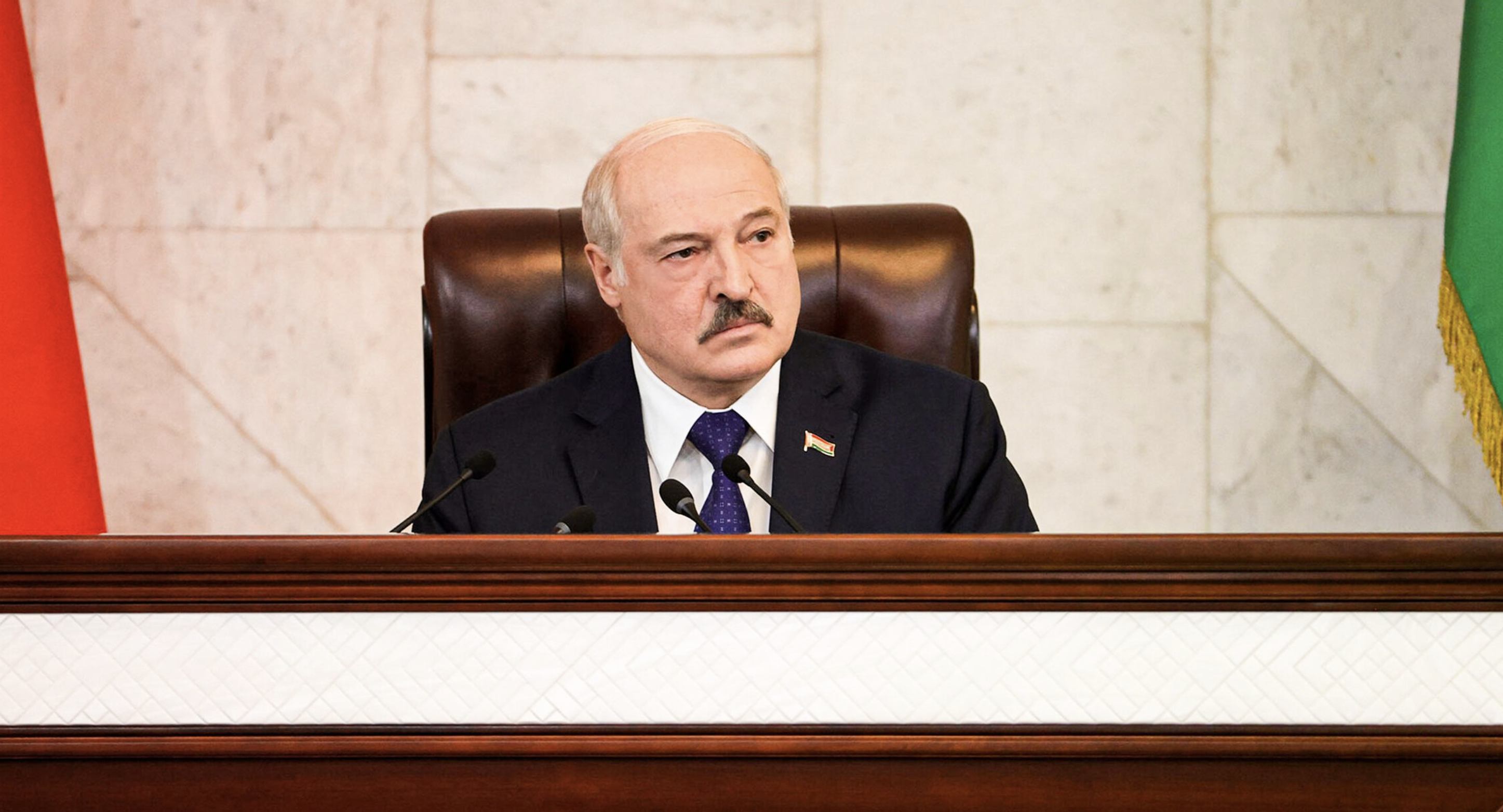
President of Belarus Oleksandr Lukashenka. Photo: president.gov.by
Trade unions, however, remained one of the most dangerous challengers. The head of the Federation of Trade Union of Belarus comprising most of the country’s workers, Uladzimir Hancharik, ran for the presidency in 2001 and lost to Lukashenka in contested elections. Since then Lukashenka’s presidential administration started a two-prong assault on trade unions. It imposed a loyal person on top of the Federation of Trade Unions and issued an emergency decree introducing short term employment contracts across all industries. Thus, the largest trade union federation became effectively a branch of the presidential administration and the dissident unions became legally marginalised. 1 to 5 year employment contracts along with a series of related emergency decrees introduced a bureaucratically controlled labour precarisation that made workers entirely dependent on the management. Thus, workers ended up in a system of managerial despotism worse than in the Soviet Union since they have been deprived of employment and job security. This condition was soon aggravated by criminalisation of unemployment that led to protests in 2017. The system of short term contracts have been finally introduced into the new Labour Code shortly before the recent protests along with other measures degrading workers’ rights.
Lukashenka’s populism rested on preserving the structural conditions of the working class but taking away workers’ political representation. As the Federation of Trade Union was co-opted to the presidential administration, dissident labour organisations have been marginalised. The marginalisation of the dissident unions, meanwhile, pushed them to rely on international solidarity and reliance on western grants. Their membership plummeted and they lost access to workplaces on most enterprises with a notable exception of the Independent Trade Union in the chemical industry. Effectively, independent trade unions turned into NGOs that promote labour-related rights with a very limited base within large enterprises. Their political agenda was an alliance with political opposition, although some preserved ties with socialist groups. This accounted for the labour’s weakness as a collective participant of the 2020 protests.
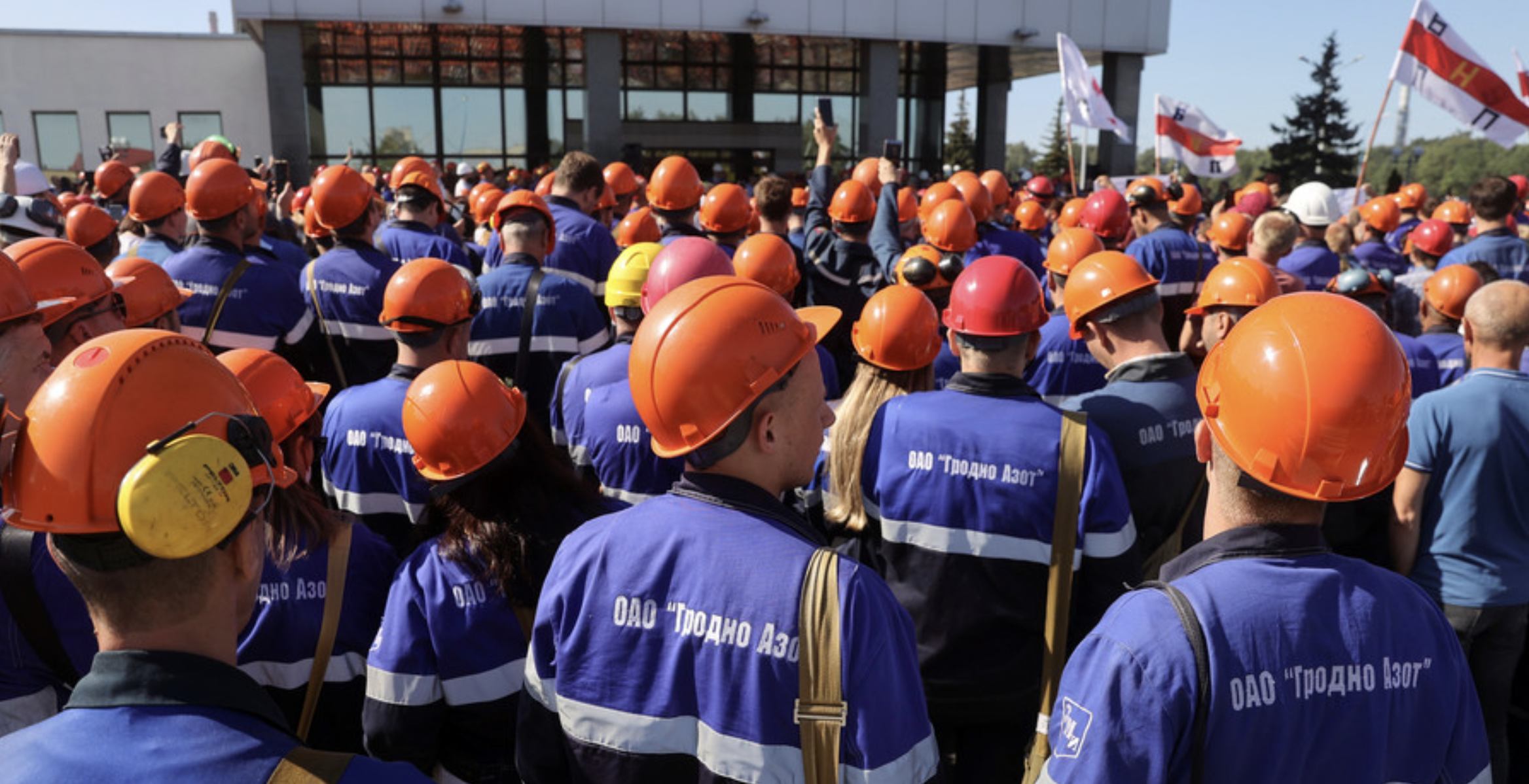
The "Grodno Azot" plant became one of the centers of the strike, but work there did not stop, Belarus, October, 2020. Photo: TUT.by
Most of the workers were drawn to the electoral protests of 2020 as individuals and not as members of respective labour organisations. Except for the case of the Independent Miners’ Union, most of the labour unrest in machine building was coordinated by spontaneously appearing strike committees with a limited membership of dozens of people. Although labour rights were present in the agenda of these strike committees, they borrowed the list of political demands from the political opposition leaders who had no relations with the workers’ movement and pursued a populist ideological strategy.
Thus, the initial impetus of the wave of the labour unrest had a limited base. Half of the protests happened in the first two weeks after the start of the protests comprising around 80 enterprises around the country. However, after it became clear that the Federation of Trade Unions remained under the control of the presidential administration, workers were threatened with layoffs and detained inside enterprises, the wave subsided: spontaneous work stoppages gave way to the work-to-rule tactics, and finally shrank to individual symbolic protest acts. The general strike announced by the opposition leaders in the end of October never materialised. Soon prominent labour leaders ended up in jail or in exile.
The defeat of the wave of the labour unrest and the broader democratic protests paved the way to a transformation of Lukashenka’s populist model of Caesarism into an outright authoritarian rule supported by police violence; with the failure of the domestic balancing act, the geopolitical balancing also failed as Belarus entered into an asymmetric dependency on Russia and became effectively an accomplice in its imperialist endeavours.
